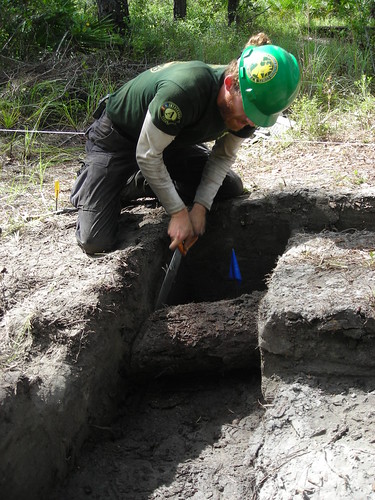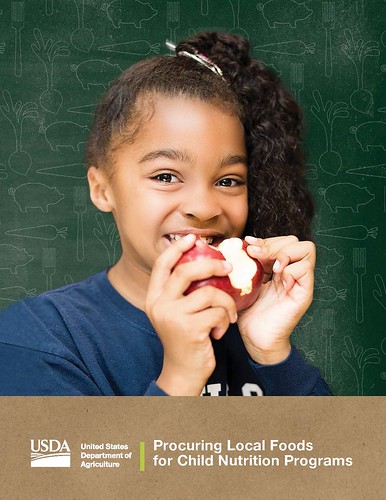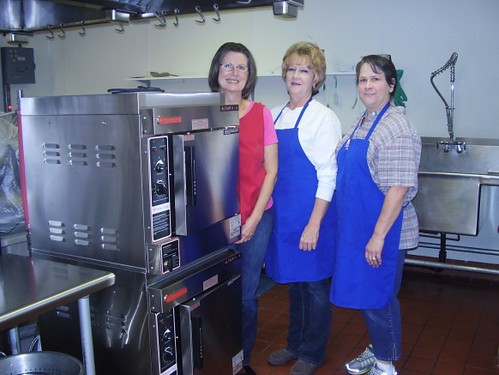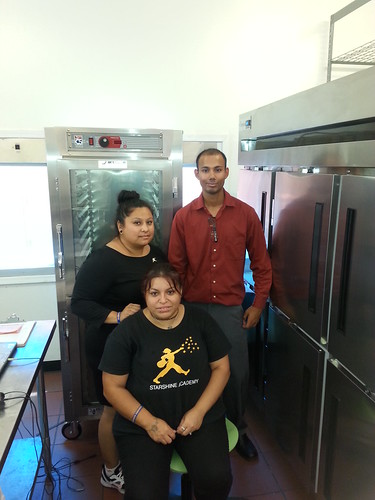The Mississippi River between Hannibal and Louisiana, MO. August 31, 2015,
Current events involving politics, political office holders, political candidates, world events, local events, crime and other public affairs issues are discussed. Business news items as well as science and technology issues may appear.
Search This Blog
Monday, August 31, 2015
Illinois Lottery winners receive IOU amid lack of budget: Report
Danny Chasteen and his girlfriend, Susan Rick, thought they had gotten their big break last month when Chasteen won $250,000 from the Illinois Lottery. Instead, they got an IOU.
The Chicago Tribune reported that disbursements of Illinois Lottery winnings of more than $25,000 have been halted because the state doesn't have a budget.
Illinois Lottery winners receive IOU amid lack of budget: Report
Tags: #Illinois #lottery #IllinoisLottery
Shaping Cape Cod
From NASA's Earth Observatory:
Shaping Cape Cod
Winds and wave refraction give the area around Provincetown a distinctive hook shape. Read more athttp://earthobservatory.nasa.gov/IOTD/view.php?id=86504&src=fb
#earthrightnow
Shaping Cape Cod
Winds and wave refraction give the area around Provincetown a distinctive hook shape. Read more athttp://
#earthrightnow
This Day in Fort Scott History
From Fort Scott National Historic Site, National Park Service:
This Day in Fort Scott History
August 31, 1843
A detachment of Company A, First US Dragoons, under command of Lt Richard Ewell, arrives at Council Grove to serve as part of a protective escort. The 150 wagons, all Mexican, departed for Santa Fe on Sep 2. The troops returned to Fort Scott in late October.
Photo of Ewell as a Confederate general during the Civil War.
This Day in Fort Scott History
August 31, 1843
A detachment of Company A, First US Dragoons, under command of Lt Richard Ewell, arrives at Council Grove to serve as part of a protective escort. The 150 wagons, all Mexican, departed for Santa Fe on Sep 2. The troops returned to Fort Scott in late October.
Photo of Ewell as a Confederate general during the Civil War.
Kanye West: I'm running for president | TheHill
Kanye West is no stranger to shocking MTV Video Music Awards appearances, but his speech during Sunday night's 2015 VMAs took a wildly unexpected turn when the rapper announced his intention to run for president of the United States.
Wrapping up an off-the-cuff and sometimes-rambling speech while accepting the Video Vanguard award at the music channel’s annual show, West said to cheers from the crowd, “I have decided in 2020 to run for president.”
Kanye West: I'm running for president | TheHill
Sunday, August 30, 2015
Alabama River Lake
From Corps Lakes - U.S. Army Corps of Engineers:
Alabama River Lake is beautiful at sunset.#alabamariverlake #sunset #beauty #corpslakes#funatcorpslakes
Alabama River Lake is beautiful at sunset.#alabamariverlake #sunset #beauty #corpslakes#funatcorpslakes
Mount McKinley
From the U.S. Department of the Interior:
The mountain has spoken: Mount McKinley officially renamed Denali. Congrats, Alaska!http://on.doi.gov/1KVKg5s — at Denali National Park and Preserve.
The mountain has spoken: Mount McKinley officially renamed Denali. Congrats, Alaska!http://on.doi.gov/1KVKg5s — at Denali National Park and Preserve.
Hurricane Katrina - 10 Years After
From #NASA:
Even 10 years after making landfall, signs from Hurricane Katrina still linger. Pounding surf, driving winds and a strong storm surge transformed the marshes: http://go.nasa.gov/1iaabPU #EarthRightNow
Even 10 years after making landfall, signs from Hurricane Katrina still linger. Pounding surf, driving winds and a strong storm surge transformed the marshes: http://go.nasa.gov/1iaabPU #EarthRightNow
Yellowstone guest asks park rangers to 'train' bears so guests can see them | Fox News
Next time they should visit a zoo.
Yellowstone guest asks park rangers to 'train' bears so guests can see them | Fox News
Every year, millions flock to Yellowstone National Park to take in the breathtaking scenery and wild animals.
But apparently some visitors to the Wyoming park would prefer that the animals not to be so wild.
Yellowstone guest asks park rangers to 'train' bears so guests can see them | Fox News
Saturday, August 29, 2015
Apalachicola National Forest Restores National Historic Landmark
From the #USDA:


Posted by Caroline Roth, National Forests in Florida, U.S. Forest Service, on August 28, 2015 at 3:00 PM

Youth workers construct an Architectural Barriers Act Accessibility-compliant trail leading to the central kiosk and earthen fort. Local volunteers, HistoriCorps partners from Colorado and Texas Conservation Corps members participated in the two-week renovation on the Apalachicola National Forest. (U.S. Forest Service photo/Jesse English)
The drive to Fort Gadsden’s Historic Site on the Apalachicola National Forest is something reminiscent of a nature documentary. Towering pines line the highway while vibrant wildflowers bloom throughout the fields. Local volunteers and Apalachicola National Forest employees are busily working in the stifling heat on a restoration project at this National Historic Landmark, the only one located in the southeast on National Forest Service land. The volunteers include: a team of workers from Colorado called ‘HistoriCorps,’ and a cadre from the Texas Conservation Corps at American Youthworks.
“Without volunteers like us, a lot of these things just go to waste and rot away because nobody has the money, the time, or the work force to do it,” said Amanda Tulley, a HistoriCorps partner from Denver.
Sited on the east bank of the Apalachicola River, Prospect Bluff was once a bustling British trading post, and later a recruitment center for escaped slaves and Seminoles to thwart American expansion until the British Fort’s destruction in 1816. Although the land was under Spanish ownership at the time, the United States returned to build Fort Gadsden in 1818.
Making the central kiosk for displaying artifacts at the site compliant with the Architectural Barriers Act Accessibility Standards is just one of the many projects the group plans to complete. The Architectural Barriers Act requires that federally owned, leased or financed buildings be accessible to disabled persons.
“Our goal is to encourage visitation and improve both visitor accessibility and how the site’s story is conveyed to the public,” said project coordinator Rhonda Kimbrough, archeologist for the National Forests in Florida. “We received funding as part of the 50th anniversary of National Historic Preservation Act, which will enable us to restore the site for our 200th anniversary celebration in late February 2016.”
While the reasons vary for each individual’s involvement, the underlying sentiment remains clear; these volunteers are all truly passionate about the preservation of Fort Gadsden and feel its history serves an important purpose in America.
“It’s important, simply because if we forget our history we really won’t have any direction for our future,” said John Bales, a volunteer from Hannibal, Missouri.
It may be the picturesque scenery, the overwhelming feeling of the fort’s rich history, or the varied plant and wildlife that is amazing, but when these volunteers speak their passion is contagious. If you’re looking for a quick and easy get-away from the mundane day-to-day, visit Fort Gadsden. It’s only 1.5 hours outside of Tallahassee and is an experience you won’t soon forget.

Texas Conservation Corps member removes a section of timber from the original 1812 fort for future study and interpretation. The remainder of the structure timber was left in place. (U.S. Forest Service photo/Rhonda Kimbrough)
Related Posts
Back to School Checklist: Fruits and Veggies
From the #USDA:


Posted by Christina Conell and Carolyn Smalkowski, USDA Food and Nutrition Service, on August 28, 2015 at 2:00 PM

USDA’s revised guide, Procuring Local Foods for Child Nutrition Programs can help schools find, buy and serve more regional offerings.
Fruits and vegetables are at the top of USDA’s back to school list, and just in time for the new school year, the Pilot Project for Procurement of Unprocessed Fruits and Vegetables is making it easier for schools in eight states to purchase them. The 2014 Farm Bill authorizes the pilot in not more than eight states participating in the National School Lunch Program, and provides them with an opportunity to better access nutritious foods. The pilot also helps create and expand market opportunities for our nation’s fruit and vegetable producers, opening the door for a variety of vendors, small growers, food hubs and distributors to supply unprocessed fruits and vegetables to participating schools.
So far, five states (California, Connecticut, Michigan, New York and Oregon) have spent over $600,000 through the pilot from February through June 2015. Several California districts contracted a produce distributor to connect local and regional producers with schools to receive peaches, cauliflower, apricots, and kale from their state. Students in Oregon are chomping on pears from the Pacific Northwest, while many Connecticut and New York schools are feasting on Macintosh apples from Massachusetts orchards and Empire apples from New York. Virginia, Washington, and Wisconsin were also selected for the pilot and will begin receiving deliveries of fruits and vegetables in the coming months.
USDA Foods provide a variety of options to bring healthy items into the cafeteria. With the flexibility to use existing distribution channels and procure these foods directly from producers, the pilot supports schools purchasing a wider variety of products from local producers when possible. As the number of vendors eligible to participate increases, so does the quantity and variety of unprocessed fruit and vegetable offerings available for purchase. The DoD Fresh Program, which also allows schools to set aside USDA Foods dollars to purchase fresh fruits and vegetables, remains an option for all states, and many schools choose to utilize both programs.
The pilot offers yet another path to expanding options available through USDA Foods and also provides an avenue for schools to support farm to school initiatives using USDA Foods entitlement dollars. For more information on how USDA Foods supports farm to school efforts, check out USDA Foods: A Resource for Buying Local and the USDA Foods section of the revised guide, Procuring Local Foods for Child Nutrition Programs.
Just as we’re exploring new avenues to get more fruits and vegetables into the lunchroom, we challenge you to find unique ways to add produce to the cafeteria this school year.
To stay up to date on all farm to school and USDA Foods activities, sign up for the USDA Foods and Farm to School E-letters.

Pears piled on top of each other.
Related Posts
Tags: Back to School, California, Child Nutrition, Connecticut, Farm Bill, Farm to School, FNS, Food and Nutrition, Food Distribution, Food Farm and Jobs Bill, fruits, HealthierNextGen, Massachusetts, Michigan, National School Lunch Program, New York, NSLP, Nutrition, Oregon, pilot project, USDA Foods, vegetables, Virginia, Washington State, Wisconsin
Taking Note of Paper's Popularity
From the #USDA:

Posted by Charles Parrott, AMS Fruit and Vegetable Program Deputy Administrator, on August 28, 2015 at 11:00 AM
Through its Paper & Packaging – How Life Unfolds campaign, the Paper and Packaging Board reminds us of the many ways we are connected to paper. Photo courtesy of the Paper and Packaging Board. (Click to enlarge)
Kindle, iPad, and Surface—oh my! It’s fascinating to think about the increasing number of electronic tablets in the marketplace. However, a recent survey suggests that students and educators alike grab another notepad when it comes to comprehending what they’ve read. And that notepad is made of paper.
In fact, 74 percent of college educators surveyed in the 2015 Annual Back to School Report said that their students are more likely to stay focused when they are using a notebook and textbook rather than a laptop. Almost 80 percent of the K-12 teachers in this same survey also said that their students comprehend information better when they read on paper. As such, 63 percent of the teachers surveyed indicated that their courses involved paper-based learning.
This phenomenon was recently captured in a Washington Post story where college students admitted they preferred reading a hard copy of Alexis de Tocqueville’s Democracy in America and other large books rather than an electronic version.
The Paper and Packaging Program is one of more than 20 industry research and promotion programs overseen by the USDA’s Agricultural Marketing Service (AMS). These self-help programs are charged with developing cutting-edge marketing campaigns and innovative research to support all of the members of the industry. Publicizing the results of the 2015 Annual Back to School Report and the Washington Post story are just a couple of examples of how the Paper and Packaging Board maintains and develops new markets for paper and paper-based packaging.
The program reminds us through its campaign, Paper & Packaging – How Life Unfolds ™, of the many ways we are connected to paper. For example, one of the organization’s infographics demonstrates the important role paper plays in our country’s recycling efforts. In addition to representing more than half the country’s recyclables, paper products support the paper mill industry where 80 percent of the country’s mills rely on recycled paper to make new paper.
As students all over the country head back to school, AMS would like to thank the Paper and Packaging Board for all it is doing to support the education of our children and the livelihood of the paper and packaging industry. And just like back in school, we are joining the campaign by passing along a very special note: paper still plays a major role in our daily lives. We encourage you to visit the campaign’s website, Paper & Packaging – How Life Unfolds ™ to learn more about the program. We also encourage you to visit our Research and Promotion Programs website to see how these programs are making a difference in your community.

A survey suggested that 63% of teachers develop their courses around paper-based learning. Photo courtesy of the Paper and Packaging Board.
Related Posts
Friday, August 28, 2015
Keeping Foods Safe For a Successful School Year
From the #USDA:
Posted by Robert Gravani, Senior Advisor for Food Safety, Office of the Chief Scientist, on August 28, 2015 at 10:00 AM
If you bring your lunch, here are some safe handling tips to prevent foodborne illness. (Click to enlarge)
As the days get shorter and the month of August winds down with the appearance of back-to-school sales, we recognize the telltale signs that signal the “official” end of summer and the beginning of a new school year. For USDA professionals interested in food safety, nutrition and health, thoughts of safe food preparation and school lunches packed at home, come to mind.
It is estimated that each year in the U.S., there are more than 48 million cases of foodborne illness, with 128,000 people hospitalized from these illnesses and nearly 3,000 deaths. It is startling that one in six Americans will become ill from foodborne illness each year since most are preventable. The most vulnerable members of our population are pregnant women, children, the elderly and those whose immune systems are compromised by other diseases and illnesses. That’s why care must be taken to assure that the foods consumed are safe.
When it comes to preparing safe lunches for your children or grandchildren, there are a few precautions to take and a few simple tips to follow. By remembering four key principles to assure safety – Clean, Separate, Cook and Chill – many foodborne illnesses can be prevented.
Clean. Make sure that your hands are properly washed before you begin preparing any food. The surfaces that you are using to prepare the lunches and all utensil and equipment should be clean. Separate. Be sure to keep raw foods and cooked separate and thoroughly wash all equipment and utensils after they come in contact with raw foods. Cook. Cook foods to the appropriate temperature using a food thermometer. Chill. Make sure that foods are properly chilled and that perishable foods like luncheon meats, eggs and yogurt included in lunch bags are kept cold with freezer packs or frozen water bottles.
Some other tips to think about include:
- Freezing juice boxes to help keep the lunch cold.
- Use an insulated lunch box or bag instead of a paper bag.
- Children should wash their hands for 20 seconds with warm soapy water before eating.
- If possible, have your child store their lunch in a refrigerator and leave the lid of the insulated bag or box open so cool air circulates to keep the food cold.
- When packing hot foods like soup, stew or chili, fill the insulated container with boiling water and let stand for a few minutes. After emptying the water, the hot food can be put in the container, which should be left closed until it is eaten. The temperature of the food should be 140°F or above.
After lunch is consumed, leftover food and used food packaging should be thrown away, or if possible, recycled or composted. Following these principles and tips will provide your kids with safe and satisfying lunches for their back-to-school activities. Please visit www.foodsafety.gov for more information.
Related Posts
Great Basin National Park
From the U.S. Department of the Interior:
As summer winds down, fall is the perfect time to visit Great Basin National Park in Nevada. Experience the solitude of the desert, 5,000-year-old bristlecone pine trees and the darkest of night skies. National Park Service photo. — at Great Basin National Park.
Tags:
#nationalpark #Nevada #desert
As summer winds down, fall is the perfect time to visit Great Basin National Park in Nevada. Experience the solitude of the desert, 5,000-year-old bristlecone pine trees and the darkest of night skies. National Park Service photo. — at Great Basin National Park.
Tags:
#nationalpark #Nevada #desert
National Mall
From National Mall and Memorial Parks:
If you've ever visited the National Mall you have undoubtedly seen military and police helicopters flying low to the south of the memorials. Have you ever wondered what the view from those helicopters is like? Well, Ryan, a fan of the National Mall, recently sent us this photo he took from a Navy helicopter as it flew past the Lincoln Memorial. We thought you'd all enjoy seeing it, too!
If you've ever visited the National Mall you have undoubtedly seen military and police helicopters flying low to the south of the memorials. Have you ever wondered what the view from those helicopters is like? Well, Ryan, a fan of the National Mall, recently sent us this photo he took from a Navy helicopter as it flew past the Lincoln Memorial. We thought you'd all enjoy seeing it, too!
The Global Hawk
From the National Oceanic and Atmospheric Administration (NOAA):
With last weekend’s arrival of the NASA Global Hawk unmanned aircraft on Virginia’s eastern shore, scientists and pilots are now ready to start the NOAA-led mission to improve #hurricane forecasts of track and intensity using data collected by the Global Hawk during the season’s hurricanes.
LEARN MORE about this important scientific mission at http://1.usa.gov/1IkVUVr.
PHOTO: The Global Hawk arrived on the morning of August 22, 2015, from California at NASA's Wallops Flight Facility on Virginia's eastern shore. It is now ready to fly above this season's Atlantic hurricanes to help improve storm forecasting. (Credit NASA).
With last weekend’s arrival of the NASA Global Hawk unmanned aircraft on Virginia’s eastern shore, scientists and pilots are now ready to start the NOAA-led mission to improve #hurricane forecasts of track and intensity using data collected by the Global Hawk during the season’s hurricanes.
LEARN MORE about this important scientific mission at http://1.usa.gov/1IkVUVr.
PHOTO: The Global Hawk arrived on the morning of August 22, 2015, from California at NASA's Wallops Flight Facility on Virginia's eastern shore. It is now ready to fly above this season's Atlantic hurricanes to help improve storm forecasting. (Credit NASA).
Thursday, August 27, 2015
Lake Superior Sunset
From the U.S. Fish and Wildlife Service Midwest Region:
Did you know that Lake Superior has enough water to cover North and South America in one foot of water? It’s also a great place to watch the sunset!
Photo: Lake Superior sunset courtesy of Curtis Abert/Creative Commons.
Did you know that Lake Superior has enough water to cover North and South America in one foot of water? It’s also a great place to watch the sunset!
Photo: Lake Superior sunset courtesy of Curtis Abert/Creative Commons.
School Lunch Equipment Grants Help Provide Healthier Meals to Students Nationwide
From the #USDA:



Posted by Amanda Heitkamp, Public Affairs Specialist, Food and Nutrition Service, on August 27, 2015 at 11:00 AM

Flowing Wells employee use the oven unit they bought with NSLP equipment grants funds.
USDA supports our tireless school nutrition professionals as they work to provide kids the nutrition they need to learn and develop into healthy adults. To further assist schools, USDA announced the availability of $25 million in National School Lunch Program (NSLP) equipment grants for Fiscal Year 2015. These grants help schools obtain much needed infrastructure to better serve nutritious meals, support food safety efforts, improve energy efficiency, and expand participation in school nutrition programs.
Here are some examples of how these grants have benefitted schools in the past:
Flowing Wells Unified School District, Arizona
Flowing Wells Unified School District was honored to have been chosen to have four of its schools selected for the USDA NSLP equipment grant in 2015. Upon learning of the grant, the district’s foodservice department took the opportunity to look at all of our schools to see where the greatest impact could be made. We decided on four schools – Centennial, Walter Douglas, Hendricks, and Flowing Wells High School and applied for the following equipment: two four-burner stove tops (Centennial and Hendricks), two double-stack electric ovens (Walter Douglas), and one Rational combi oven unit (high school). Our district was excited to receive approval for all four schools and all requested equipment. Since the equipment has been installed, our staff has increased production and improved the quality of food. Our employees are grateful that they have the new equipment and the quality of our program has increased. Flowing Wells Unified School District Foodservice Department is now in a better position to continue our pursuit of the best quality food we can offer.
Shaker Regional School District, New Hampshire
We received $23,000 in USDA funding for an equipment purchase for the Belmont Elementary School. Funds were used to buy a new double decker convection oven to replace an existing oven that was not working well. We also purchased a new 40 gallon steam jacketed kettle to replace an old broken kettle. The new equipment has allowed the school to improve the quality of the foods they prepare and offer to the 400 kids who attend Belmont.
Garfield County School District, Utah

Panguitch Middle School staff pose with their new double deck electric convection oven.
Staff at Panguitch Middle School are very happy with their new double decker electric convection oven, which is the result of a NSLP school kitchen equipment grant. They replaced a 29-year-old oven and have improved the energy efficiency and safety of their school food operation. With the old oven, cooks were burning their arms pulling out trays of food, and one of the doors had fallen off and been fixed, but the oven wasn’t expected to last much longer. The middle school kitchen prepares daily meals for more students than any other kitchen in the Garfield School District, but had the oldest kitchen equipment. The equipment grant was a huge help to this school.
New Haven Public Schools, Connecticut
We purchased a Robot Coupe, a commercial food processor, to cut up vegetables in various shapes and sizes for the schools’ veggie bars. It can also be used when roasting vegetables and preparing fruit as well.
We’ll use it district-wide for the elementary, middle and high schools. The idea is to increase students’ interest in the veggie bar by seeing something new and different each day. Different attachments will allow them to vary size and shape for slicing, ripple cutting, cutting into sticks, strips, crisscross or dice shapes. For years, the schools offered two salads and when interest dropped they added a special salad (already mixed up) in the weekly rotation. Students really liked the new option, and it has boosted interest in the salad bar again.
The impact of the equipment grants has been remarkable in our district. We are able to now work with the UVA food program. It enables our kitchen to be used as a teaching kitchen for the community. With the equipment grant we got a brand new refrigerator holding cabinet and warming well. We needed the items to help store and keep food at the proper temperatures. We were renting the warmers and didn’t have commercial refrigeration. Now thanks to the NSLP equipment grant our kitchen is like a state of the art restaurant kitchen!

StarShine staff enjoy their warming well and refrigerator holding cabinet.
Related Posts
Sioux Falls Waterfall
From the U.S. Geological Survey (USGS):
Sioux Falls Waterfall — A recent photo of the Big Sioux River, as it passes through the city of Sioux Falls, South Dakota, shows off this amazing waterfall for which the town is named.
Also located just north of downtown Sioux Falls is the USGS EROS data center. EROS Center is home to the Landsat program, which annually distributes millions of satellite images of Earth's changing landscape to users worldwide for a myriad of purposes ranging from agricultural and water management to disaster response to scientific and national security uses.
You can download the latest Landsat imagery, access data, and more by visiting the EROS site athttp://eros.usgs.gov/ Photo credit: Alex Demas, USGS.
#USGS #science #waterfalls #SiouxFalls#SouthDakota #EROS #satellite #Earth #Landsat
Sioux Falls Waterfall — A recent photo of the Big Sioux River, as it passes through the city of Sioux Falls, South Dakota, shows off this amazing waterfall for which the town is named.
Also located just north of downtown Sioux Falls is the USGS EROS data center. EROS Center is home to the Landsat program, which annually distributes millions of satellite images of Earth's changing landscape to users worldwide for a myriad of purposes ranging from agricultural and water management to disaster response to scientific and national security uses.
You can download the latest Landsat imagery, access data, and more by visiting the EROS site athttp://eros.usgs.gov/ Photo credit: Alex Demas, USGS.
#USGS #science #waterfalls #SiouxFalls#SouthDakota #EROS #satellite #Earth #Landsat
Wednesday, August 26, 2015
School Breakfast Program Provides Increasing Number of Meals
From the #USDA:

Posted by Victor Oliveira, Economic Research Service, on August 26, 2015 at 10:00 AM

ERS’s Charts of Note series, like the above, provides daily snapshots of highlights from current and previous research on food assistance and other topics. Each provides a graph or map with accompanying text.
Sometimes called the “most important meal of the day” for school-aged children, breakfast is available at nearly 90,000 schools across the country courtesy of USDA’s School Breakfast Program. On an average school day in fiscal 2014, some 13.5 million students participated. The Economic Research Service (ERS) illustrates the growth of the program in a new entry in its popular daily “Charts of Note” series. As the chart indicates, participation has more than doubled since 1996.
The School Breakfast Program, permanently authorized in 1975, is newer than the arguably-more-renowned National School Lunch Program, established nearly three decades earlier in 1946. The statistics tell an interesting story. Throughout the history of the School Breakfast Program, the number of participating children was considerably smaller than in the National School Lunch Program and is still less than half. Nevertheless, as the breakfast program funding increased—and grants to schools to help start up the program became more available—the number of schools participating in the breakfast program has steadily grown, making it available to more students.
The School Breakfast Program has historically targeted low-income areas where the need is greatest; and its share of reduced-price or free meals has been larger than that of the National School Lunch Program. But as the latest edition of ERS’s Food Assistance Landscape points out, the difference between the two programs in this regard has narrowed, with each serving over two-thirds of its meals at reduced price or free. The “Chart of Note” seen above breaks down the share of full-price, reduced-price, and free meals for the breakfast program. A notable increase in the free and reduced-price share in both programs in recent years likely reflects more children qualifying and choosing to participate during the 2007-09 recession, along with policy changes that have simplified the process of program qualification.
ERS’s Charts of Note series provides daily snapshots of highlights from current and previous research on food assistance and other topics. Each provides a graph or map with accompanying text.
Related Posts
Subscribe to:
Posts (Atom)














